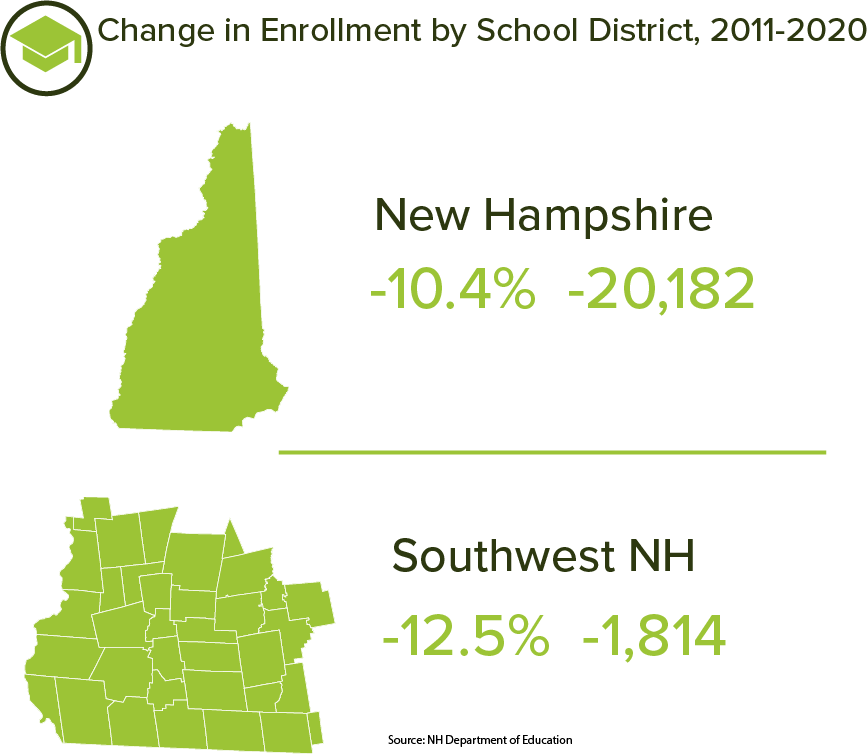Schools are necessary infrastructure for our communities in Southwest New Hampshire. They provide opportunities for social connection and community building for all ages, a source of community pride and crucial childcare for working families. Ensuring high-quality education for New Hampshire’s youth is crucial to the future of our region, and is inextricably tied to almost every part of the economy from workforce development to future earning potential and labor force participation. At the same time, the nature of education funding in New Hampshire means that school enrollment is a subject of intense debate. Municipalities, and by extension local taxpayers, shoulder one of the highest shares of overall education funding in the nation. As a result, there often is a perception that larger school enrollments will lead to higher property taxes, an argument that has been a major inhibitor for zoning and regulatory changes at the local level.
The figure below provides an overview of the change in the average enrollment of all grades between the time periods of 2009-2011 and 2018-2020. This represents change over an approximately 10 year period while accounting for some annual fluctuation in class size. Change in enrollment is calculated from the average of those two periods in time as enrollment can fluctuate significantly from year to year, and comparing averages provides a more clear picture of trends in enrollment over time. Both the state and Southwest New Hampshire saw declines in enrollment, but local school districts experienced a faster decline than the overall state average. Nine school districts experienced losses over 10%, and both Contoocook Valley and Mascenic Regional experienced enrollment declines of nearly 20%. There were also a handful of school districts which experienced an increase in enrollment, all of which had total enrollments of under 100 students.

As previously mentioned, trends in enrollment were not universal across all school districts. The chart below provides a breakdown of changes in school enrollments from the period of 2011-2013 to the period of 2018-2020 by school district for all grades. An important note is that LEAF Charter School was not in operation from 2009-2011, meaning that their entire average enrollment in the 2018-2020 period would be counted as a net gain.
Source: NH Department of Education. To minimize random year-to-year variation, enrollment data reflect 3-year trailing averages (i.e., data for 2011 reflect average enrollment from 2009 to 2011.)
Shrinking school enrollments are cause for concern on a number of fronts for Southwest NH communities. At its most severe, declining enrollment can lead to school closures, significantly impacting the attractiveness of a community for young families. Declining enrollment also signifies a shrinking base of younger people entering the workforce locally. Financial strain caused by declining enrollment may have a multitude of impacts on the transportation, programming and overall quality of education that a district is able to offer. Over this time period, Southwest NH municipalities have experienced a continual increase in property tax rates, demonstrating that enrollment numbers alone, as many fear, are not the main driver of property tax increases.